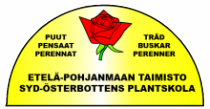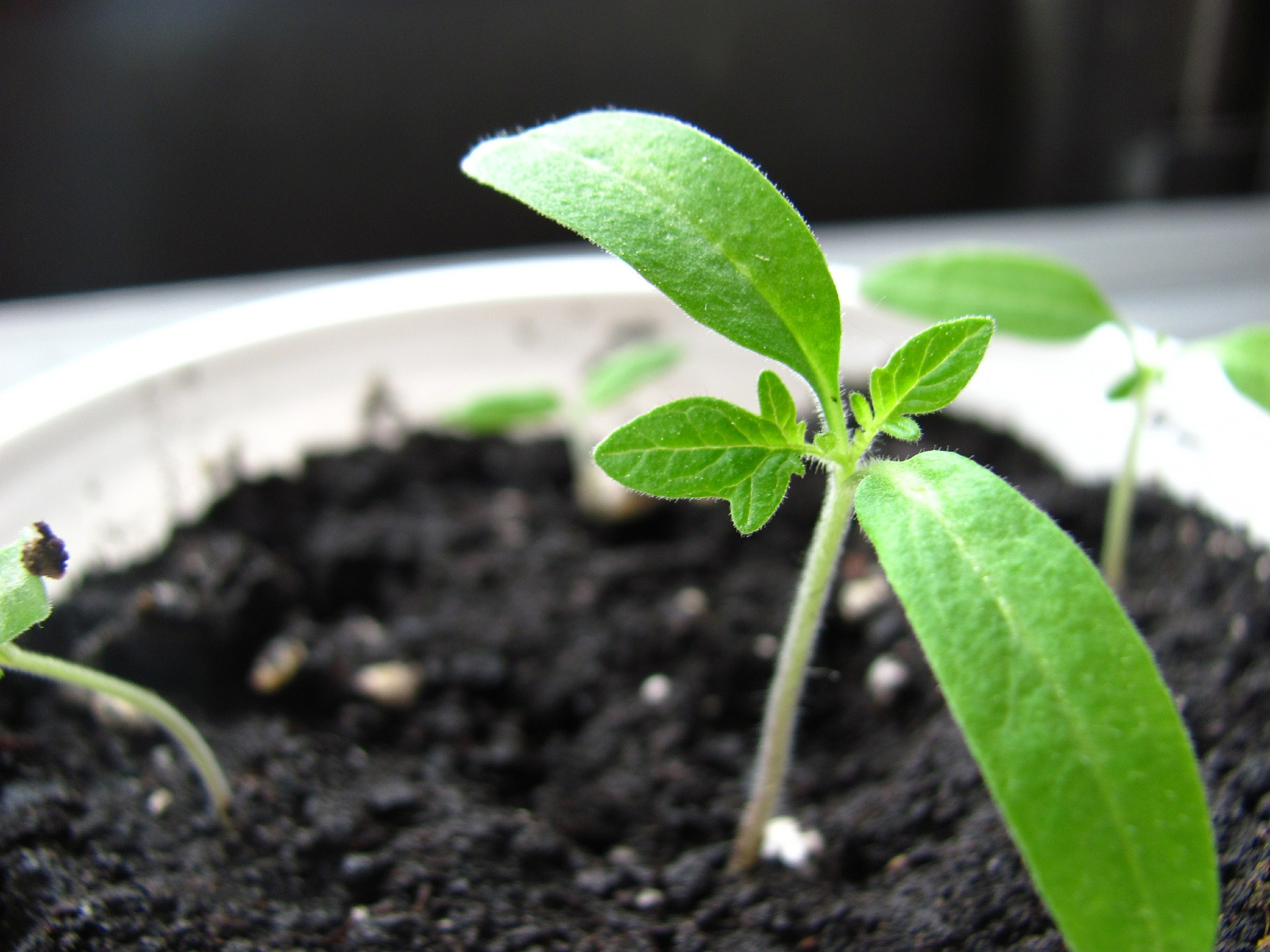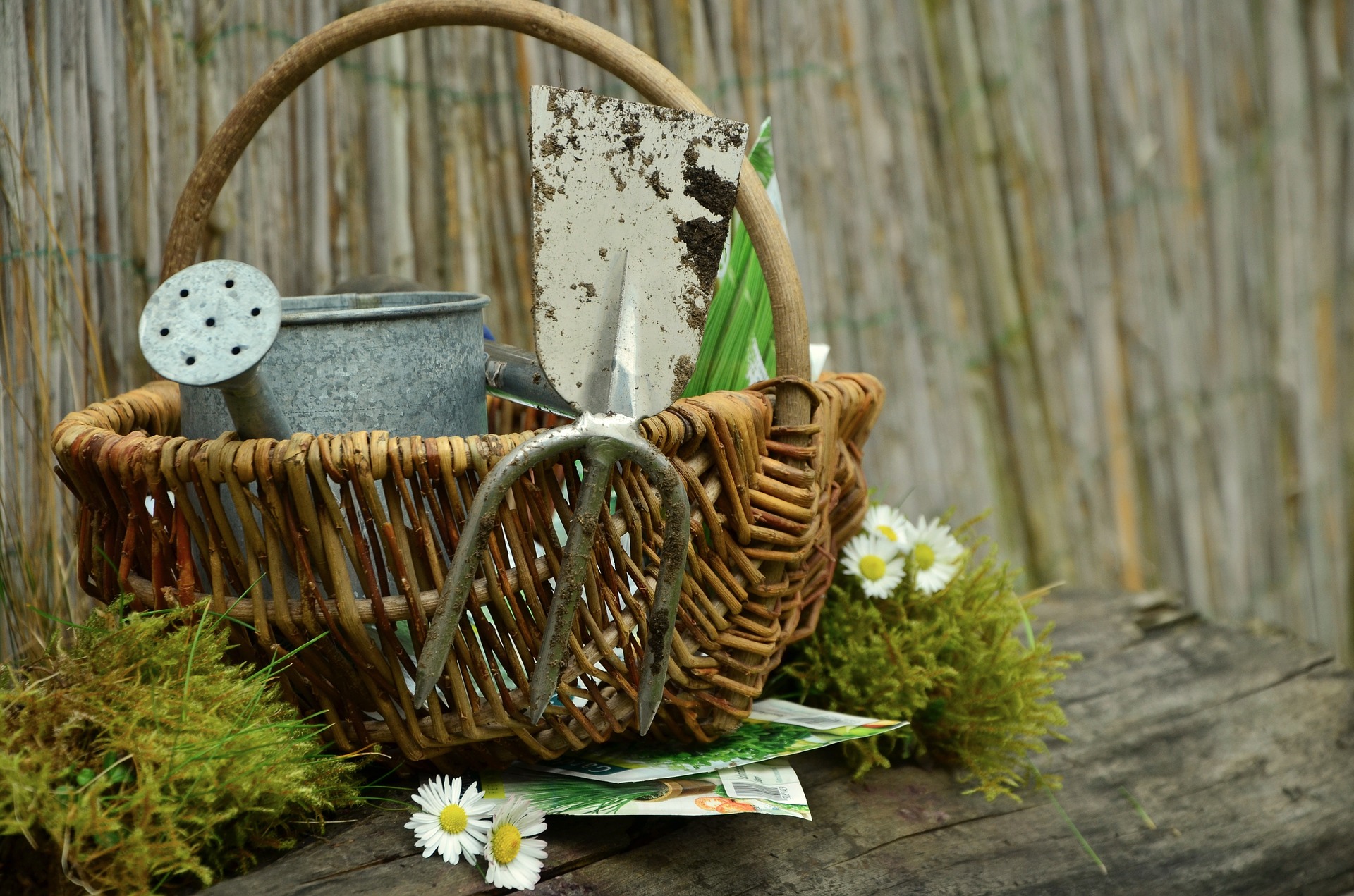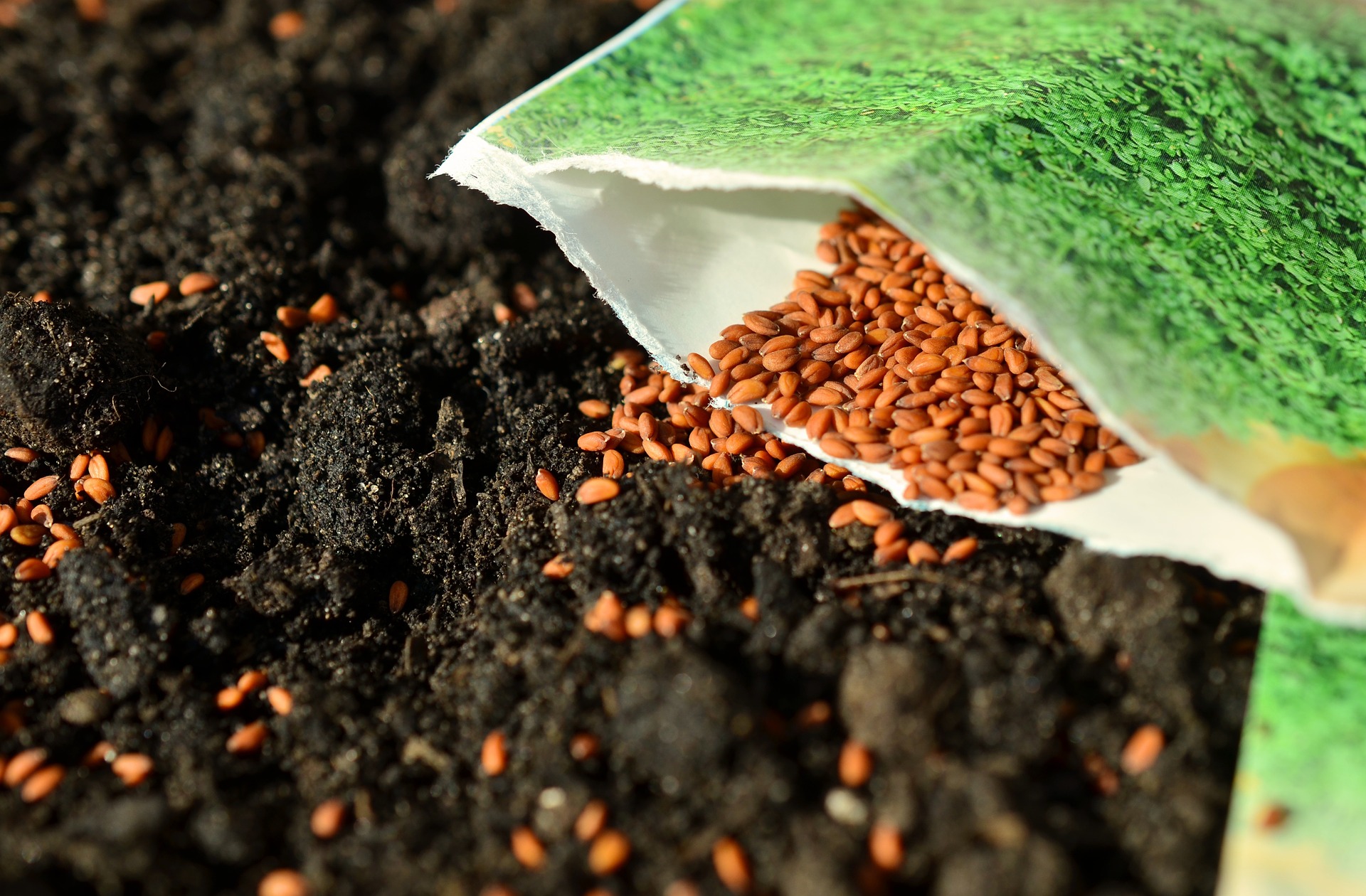Planting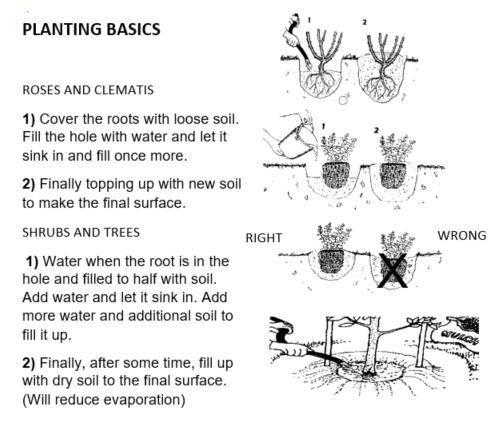
Plants normally thrive in well drained soils containing equal amounts
of clay, mulch and sand. If the soil is not good enough (For example too much sand, moraine or heavy clay) you should at least improve the soil around the roots. Plants should not be planted too deep. The surface in the pot or root ball should still be in the surface after being planted in the final place. Plants survive the winter much better if the roots all well drained and can breathe. If a plant is in an undrained place where it is constantly wet it will die so it is always good to have a slope away from the plant. For roses and clematis it is important that they are planted deep enough to have soil or sand protecting the root and it is important that they have well drained soil containing for example sand. Bigger trees, especially if planted in open windy sites or with sandy soils should be staked with one or several wooden or bamboo stakes. Otherwise the tree can become tilted and the movement of the root ball in the planting hole may damage the tree's fine, absorbing roots. After 1-2 years the stakes can be removed letting the tree to get used to supporting itself.
Watering
The most important watering is the first one you do when you put the plant into the soil. Water slowly so as to attain deep water penetration that will settle the soil and prevent airpockets. You cannot water too much at the beginning, 20-30 Liters per rootball is minimum. You want the rootball to be completely saturated when finished watering. This way the plant gets a good start and you avoid that it struggles with lack of water the first weeks. After this initial watering at planting, you probably do not need to water the plant anymore unless it is an exceptionally dry and sunny season or if you have planted a tree with lots of leaves that consumes a lot of water. Then If you water the tree after the planting it is important that you water in such a way that the water actually gets down to the root. To do this you can put a ley around the plant wnd water slowly or to use a deep root waterer. Light surface watering will only help your weeds to grow.
Type of soil
Depending of the plants, they have a bit different requirements on the soil. Most plants like neutral (PH 6-7) soils which is well drained.
PH: If the soil is sour (PH <5,5) the roots are not able to take up certain important minerals. Even if you put more fertilizer in a too sour soil, the plants cannot absorb it. Therefore it is important to make sure you have the right PH. Most natural soils are slightly sour and will improve by adding lime. But there are some plants (For example Rhododendron, Blueberries, Pine trees) that like more sour and un-limed soils (PH 5-6). Over time, soils becomes more sour, but you can quickly lower the PH by adding special rhododendron & pine tree soil, peat, bark, pine needles and other organic material.
Permeability/Soil drainage: Regarding the permeability you can check how well the soil is drained by digging a hole for your plant and fill it with water. If there is still water in the hole after 12 hours you need to improve the drainage with more sand mixed into the soil or raise the level by adding more soil on top.
We will gladly give you the advice you need based on the plants you have purchased.


